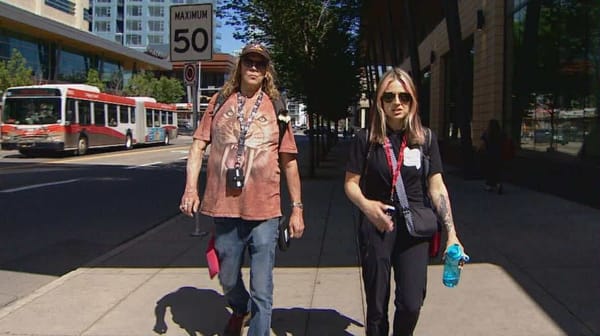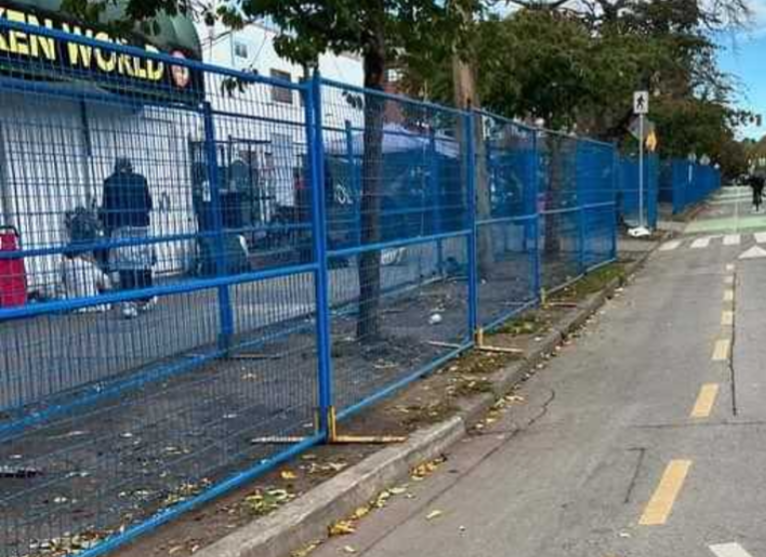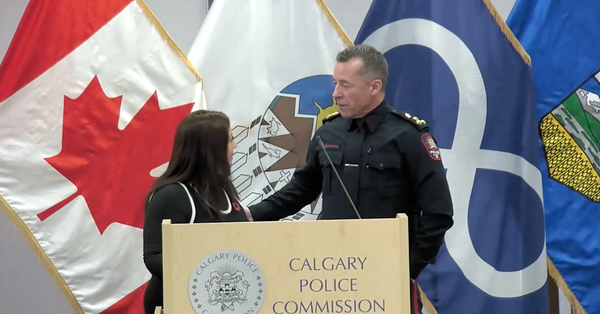De-prescribing the right to life, liberty & security
A study on Canadian opioid de-prescribing charts the course of the crisis since 2000 and provides a stark warning against the looming elimination of safe supply programs.

A new open-access study has retraced Canada’s march toward the current stage of the unregulated drug poisoning crisis. It shows that while opioid prescribing underwent a rapid increase in the early 2000s, de-prescribing of opioids in the mid-2010s is tightly linked to the emergence of fentanyl and the massive surge in deaths since.
The authors note, “the timing of the rapid onset and acceleration in [fentanyl]-related fatalities 2015 onward rather precisely coincided with the reversal point and subsequent stark declines in prescription opioid dispensing,” showing a series of two graphs that illustrate the point. They also explore the reasons for which opioids were initially prescribed at such high levels in the early 2000s, but frame this entirely around outcomes related to chronic physical pain management. They assert that little positive impact on pain management is discernible from public health data as a result of the early 2000s uptick in opioid prescribing.
However, this framing ignores other drivers of demand for opioids, including recreational use and management of emotional and psychological pain at a moment in the early 2000s characterized by massive global upheaval. As Dasgupta, Beletsky and Ciccarone asserted in 2018: “the crisis is fundamentally fueled by economic and social upheaval, its etiology closely linked to the role of opioids as a refuge from physical and psychological trauma, concentrated disadvantage, isolation, and hopelessness.”
(For Canada in that period, consider collective traumas such as 9/11 and mass deployment for the ‘War on Terror’; economic determinants such as globalization-driven job market volatility and de-unionization; and a growing national reckoning with modern Indigenous genocide that led to the Truth and Reconciliation Commission.)
As others have pointed out, Canada’s 24 safe supply programs are at imminent risk of closure if funding is not renewed in March 2024. This has far more to do with the politics of safe supply than the evidence, given that safe supply programs are positively impacting the health and safety of their communities while zero credible evidence is brought forth that they are contributing to drug poisonings.
But these programs are too limited in size and number to impact the big picture: that Canada likely saw its highest-ever drug poisoning death count in 2023.
BC’s regional health systems appear to have made up their minds, with safe supply prescribing in BC already in a nosedive since reaching a peak in March 2023. These programs primarily comprise fentanyl and hydromorphone dispensing. Comparable data aren’t currently available for other provinces.

In Alberta, the government has been well aware of the link between de-prescribing and increased poisoning death rates since its own Chief Medical Officer of Health, Dr. Deena Hinshaw, had the undivided attention of several cabinet members in the UCP Safe Supply Committee. There, Dr. Hinshaw showed them this figure from Alberta prescribing and drug poisoning data:
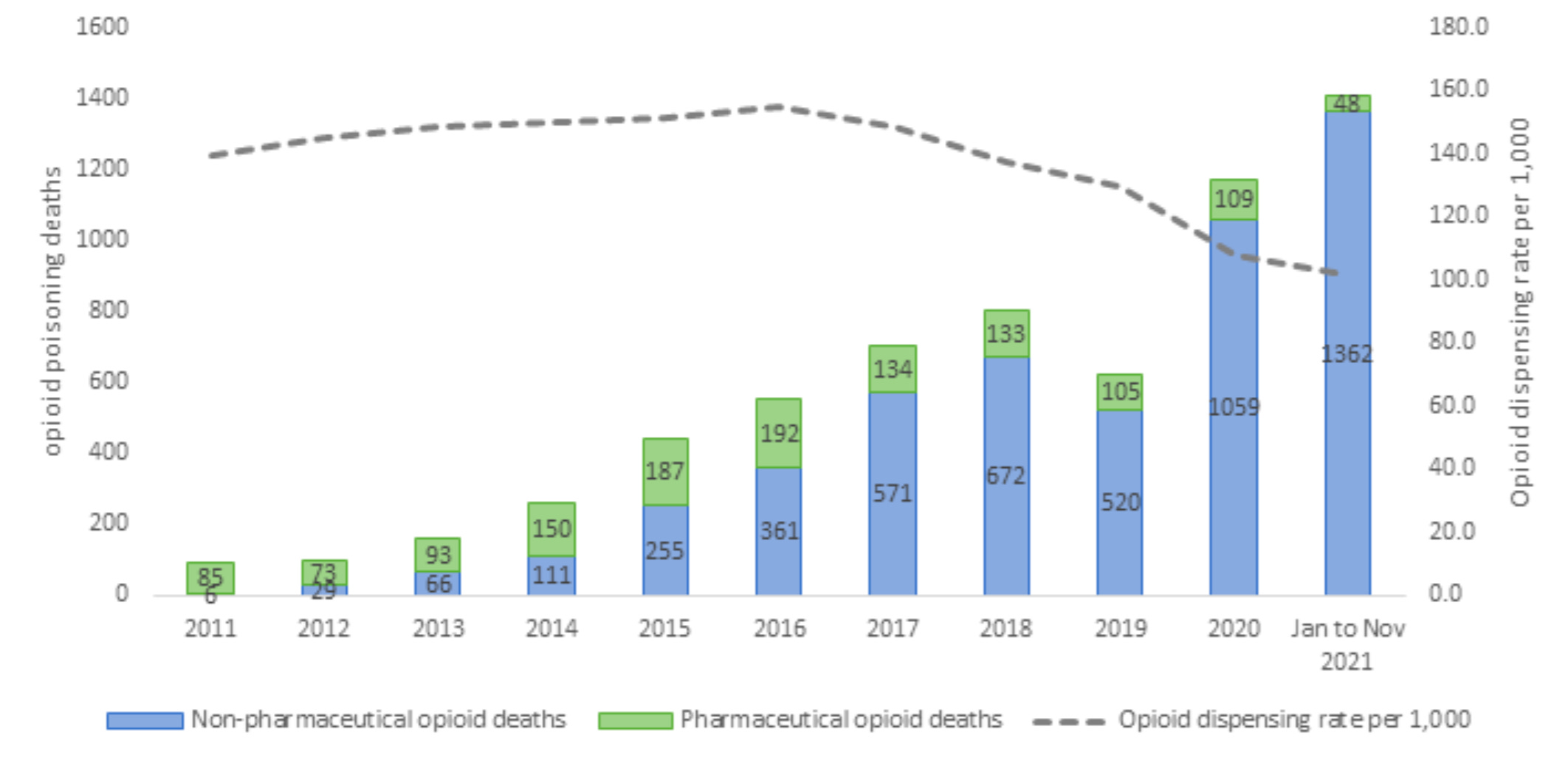
But now, perhaps in response to the collapse of the Alberta model’s claims to success, we are seeing increased hydromorphone dispensing for opioid users to a 3-year high in the third quarter of 2023. This was limited to onsite consumption under supervision early in 2023, and the Alberta government continues to refuse federal programs. Alberta’s Opioid Dependency Program also has yet to fulfill its 2022 promise to dispense fentanyl and heroin.
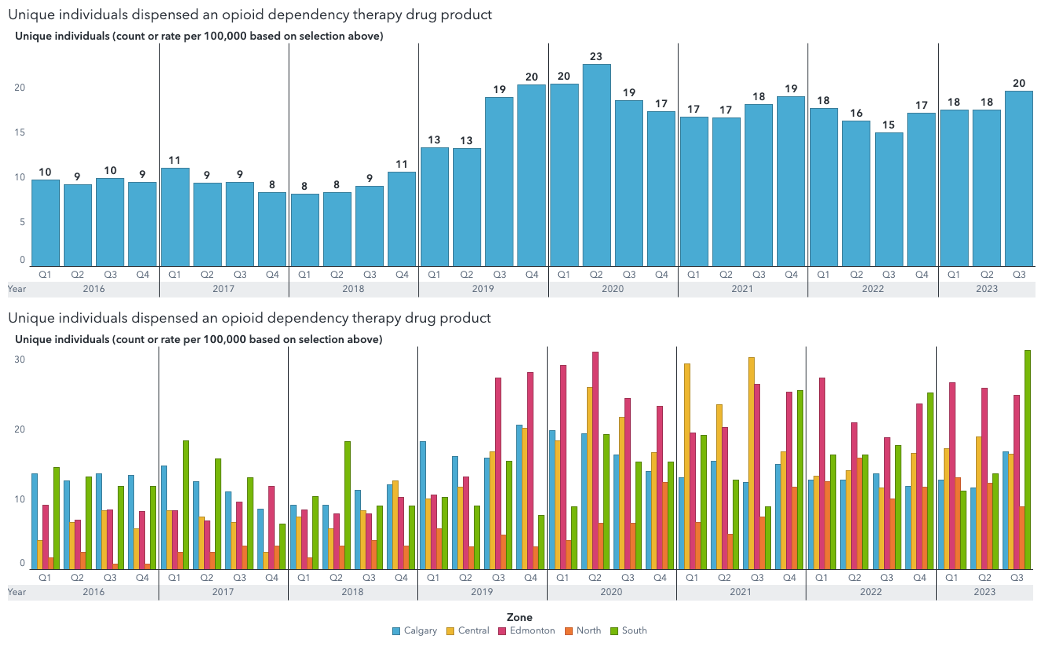
There's a flipside to all of this. When someone is separated from their prescription before they're ready to part ways with the drug, they're forced into the illegal market. This gets expensive—illegal drugs aren't cheap or covered by health insurance. It also gets risky, as newly minted ‘criminals’ now have to duck cops in addition to playing Russian roulette with unregulated drug supplies.
Police leadership supports this state of affairs, as evidenced by their criminalization of safe supply and advocacy against decriminalization. It makes sense: more criminals means more police, and more police means higher paycheques for those higher up in the pyramid. (Edmonton Police Chief Dale McFee hauled in $340,000 in 2022, which was only revealed after an FOI request submitted by Duncan Kinney.)
By now, police must be aware that when they confiscate someone's drugs, with or without an arrest, they put that person at higher risk of drug poisoning and in a position where they might have to commit petty crime to make up the loss. Against this backdrop, Calgary Police recently told on themselves: concurrently with drug deaths climbing higher with each passing month in 2023, they criminalized opioid users with a frequency 314% higher than the five-year average.
The police must also be aware that dismantling encampments places their residents who use drugs at higher risk of death. As we recently revealed, unhoused Calgarians now make up 2/3 of the city’s drug poisoning deaths and are at 1,000-fold higher risk of drug poisoning death than housed Calgarians.
“They’re throwing away my jacket,” she said with her eyes planted on the clean-up crew. “I can’t watch this. I’m gonna go. I can’t handle this.”
-Edmonton encampment evictee, (Edmonton Journal) January 3, 2024
In Edmonton, City policy dictates that ‘high risk encampments’ must be cleared by the police within 1 to 3 days of being identified. The catch is, ‘high risk’ is defined by “size of the encampment, biohazards, needles, garbage, fire, amount of materials present, propane tanks, and proximity to schools or playgrounds,” a wide enough net to catch almost any encampment. Risk level is assessed by peace officers working for the police or directly for the City.
There is an open letter that you can sign onto (I have signed onto it, along with nearly 100 others) asking for an emergency City Council meeting to find a way to “halt the violent and disruptive decampment of hundreds of community members from the only shelter they currently have.”
Understanding how de-prescribing likely ushered in the fentanyl market and the ensuing rapid increase in drug poisoning deaths through the mid-2010s helps us stitch all this together. Life gets more expensive for people cut off from their prescriptions, many of whom then turn to the illegal supply, where they’re labelled as criminals. Some of them begin or become unhoused, where they are exposed to all kinds of violence—most routinely police violence—and the loss of the right to build any kind of a home in place. The endless confiscation of their drugs and scattering from their encampments puts them at higher risk of death but also prompts survival crime, which resets the cycle of police-enforced violence.
Celebrate the victories, which are few and far between: Pivot Legal, Canadian Drug Policy Coalition and Harm Reduction Nurses Association just won an injunction against the Province of BC to halt its poverty-targeting rollback of decriminalization. While doing so, act federally to grow safe supply as community practice and act locally to dial back the increasingly undemocratic power of police.
As Edmonton is showing us with its bittersweet win against the City on encampment sweeps, building a broad coalition that respects everyone’s Charter 7 right to life, liberty and security of the person is the path to true community safety.
To find your coalition, consider signing the open letter on encampment evictions in Edmonton and organizing a DULF Solidarity Rally on January 16—no matter where you are.



